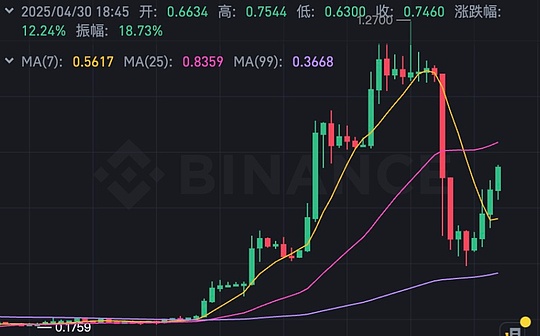
Author: Tim Craig, DLNews Translation: Shan Ouba, Bitchain Vision Realm
-
If Ethereum’s verification device exits the queue and becomes crowded, Lido may not be able to convert STETH to Ether during this period.
-
STETH holders then depend on existing liquidity to sell their tokens.
-
LIDO’s STETH tokens lack of liquidity may cause it to be decoupled during the market extreme fluctuations.
Earlier this year, CELSIUS, a closure cryptocurrency lending platform, announced that it would extract Ethereum, which was previously pledged on the chain $ 1.6 billion.
This move instantly blocked the Ethereum’s pledge withdrawal queue, which caused other Ethereum pledges to be unable to execute withdrawal.
For most pledges, waiting for Ethereum for a few days to extract them is just a small inconvenience.
However, according to some analysts, this delay may become a major problem for Lido and STETH, the latter is the largest Ethereum migrant pledged token, with a circulation of more than $ 23 billion.
Riyad Carey, an analyst of Cryptocurrency Research Company Kaiko, told DL News: “The decline in STETH liquidity is a serious problem.”
People are worried that when the liquidity level is low and the queue is blocked, STETH, which is a pledge Ethereum deposit receipt, may be decoupled again with Ethereum, causing those who leverage the tokens on the borrowing agreement.Essence
>
Although there is no decoupling this time, many people are worried that if the cryptocurrency market suddenly falls again, as investors are anxious to lift the mortgage and cash out, the Ethereum pledge queue may be extended quickly.
Lido believes that STETH has enough liquidity and has a mechanism to prevent re -decoupling.
However, as STETH is increasingly intertwined with a wider Defi ecosystem, the threat caused by potential liquidity crisis will only become more obvious.
Insufficient liquidity
According to the data of LIDO’s STETH liquidity DUNE dashboard, the current decentralized exchange value is about $ 274 million.
Lido Agreement Director Marin TVrdić said in the recent X post that STETH’s liquidity on the centralized cryptocurrency exchange is between seven and eight digits.
Carey believes that the current STETH is insufficient.
He said that when the Ethereum verification device withdraw from the queue becomes crowded, if you suddenly need to close the position, there is no sufficient liquidity to support the STETH leverage bet worth more than $ 3 billion on the Defi borrowing agreement AAVE.
Because the verification queue is blocked, Lido cannot immediately convert STETH to Ether.This means that it has fallen into a trading pool that promotes the exchange between STETH and ETH to fill the vacancies.
If STETH starts to get out of the anchor exchange rate when the demand is imbalance, it may cause a series of liquidation of AAVE.”If any large STETH holder becomes impatient and sells, things may become bad,” Kaili said.
Kaili is not the only person to worry.
The Stable Coin Agreement Gyrscope co-founder Ariah Klages-Mundt said that STETH is “very likely” in the future.
“If it happens at a certain time, please don’t be too surprised. You must plan for such a thing to happen at a certain time in the financial field,” Klages-Mundt said in the recent X post.Many other Ethereum ideological leaders also shared similar views, although not everyone clearly pointed out the STETH of Lido.
>
The use of STETH in AAVE and other borrowing markets is a popular Defi strategy that improves returns.Investors deposit STETH into AAVE and borrow Ethereum, and then store them into Lido to get more STETH.
Repeating this cycle will increase the pledge yield yield of STETH, but if the investor’s STETH mortgage has fallen from the value of Ethereum, investors will also face the risk of liquidation.
Good performance records
Nevertheless, not everyone thinks that Lido’s current level of liquidity is worrying.
ADCV, anonymous contributor of lido DAO, toldDl news“According to the evidence on the chain that can be observed”, saying that STETH’s lack of liquidity is “inaccurate.”
ADCV said: “STETH has a mechanism -level liquidity on the chain and under the chain of the main trading venues of the main network, the second layer AMM, and the main CEX.”
In order to support his statement, ADCV pointed out a good record of Lido in performing STETH redemption.
He said that since last year’s Shapella upgraded activation activation of withdrawals, only less than 30,000 of the 3 million Ethereum withdrawn from Lido took more than 120 hours to handle it.
On the other hand, AAVE follows the judgment of DAO service providers such as Chaos Labs and Gauntlet to evaluate the risk of using STETH.
In November, Chaos Labs proposed that AAVE could increase the upper limit of STETH deposit supply to an additional 1.1 million tokens, “it will not bring major risks to the agreement.”
But this suggestion was also supported by Gauntlet, but there was a warning: CHAOS LAB’s risk calculation assumes that there is no significant price difference between Ether and STETH.
Preventive measures
Carey said the liquidity problem of LIDO began to provide LDO tokens in motivation to the liquidity provider of the STETH-ETH pool on the Curve Finance.
Lido stops motivation, because Ethereum’s Shapella upgrade allowed pledges to start with Ether coins from the pledge contract of the blockchain.
This means that if the supply is imbalance, Lido can convert STETH into Ether coins without having to rely on the STETH liquidity of the exchange.
Lido’s own data shows that since the upgrade of Shapella, STETH liquidity on Curve Finance has fallen from about $ 800 million to $ 274 million.
>
Since Ethereum’s Shapella upgraded in April, STETH liquidity on the chain has decreased significantly.
Kaili said that Lido can take more measures to support liquidity.
“I wrote back in July that I think LIDO should consider cooperating with a city merchant to help increase liquidity under the chain,” he said.”Although the liquidity of the chain has improved since then, I do think it is still worth exploring.”
Lido seems to be looking for a way to further ensure STETH liquidity.
In August, Glass Markets, a cryptocurrency analysis platform, released a proposal at the Lido Research Forum to request appropriation to evaluate STETH liquidity and write a research report to list the best way to solve its proposal.
The post posted by members of the Lido DAO operating work process confirmed that Glass Markets has obtained funds to complete the research report.








